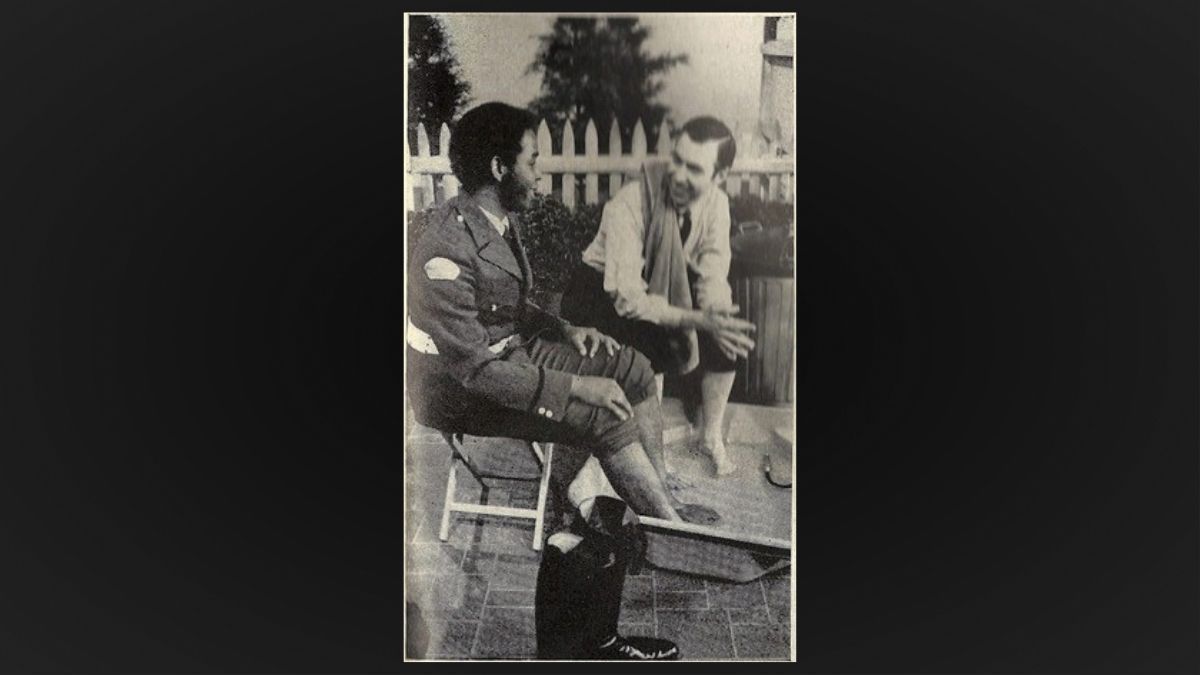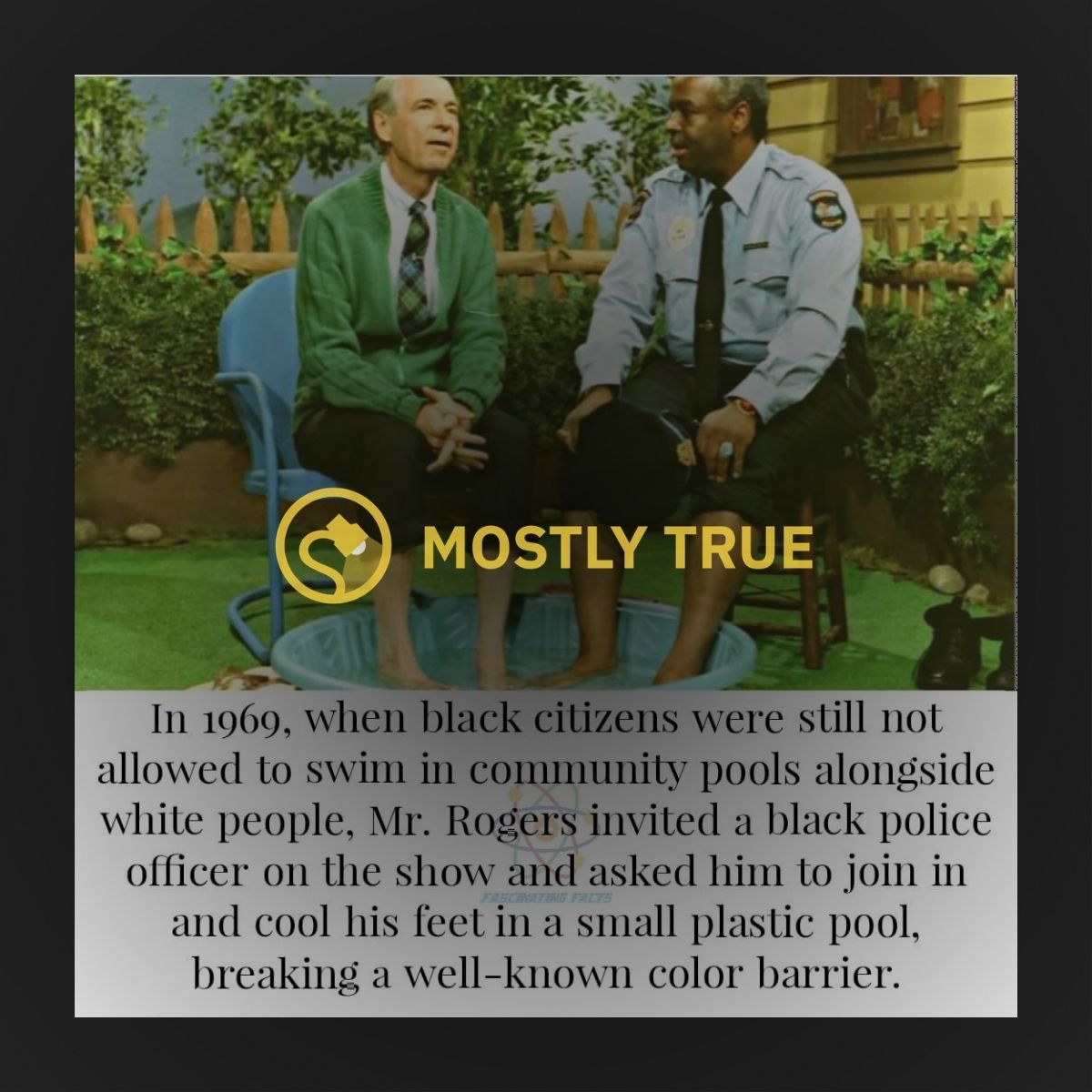Francois Clemmons, a Black actor playing a police officer, and Fred Rogers dipped their feet together in a wading pool on an episode of “Mister Rogers’ Neighborhood” in 1969, breaking color barriers. At the time Black people were prevented from swimming in pools with white people around the country, and there was civil unrest over racially segregated pools.
Clemmons was not a real police officer, but an actor.
Children’s television show host Fred Rogers led the way on breaking many barriers. One famous instance took place on an episode of “Mister Rogers’ Neighborhood,” when Rogers, a white man, dipped his feet in a wading pool alongside Francois Clemmons, a Black man.
The episode, which aired in May 1969, broke color barriers at a time when Black people were barred from using swimming pools around the United States on account of their race. Civil unrest over segregated pools was also ongoing. That year, the Supreme Court ruled that pool access was a property right that could not be limited by race.
Decades later, the following meme circulated online:
Clemmons, who played Officer Clemmons on the show, was not a real police officer but an actor. During the episode, Clemmons visits Rogers in his neighborhood on a hot day, and Rogers invites him to dip his feet in a wading pool with him. Rogers also offers to share the same towel.
The original clip from 1969 can be seen here at the 1:28 mark:
The meme above shows a photograph from when the scene was recreated by Clemmons and Rogers more than two decades after the original pool scene:
Clemmons reflected on the famous scene in an interview with WBUR's "Here and Now":
I thought [that moment] was kind of light. I was expecting something like maybe calling [Dr. Martin Luther King, Jr.] up or calling the president up or saying, you know, this is amoral and some kind of curse on these people, and he didn't do that at all. He said, 'Come, come sit with me.' And he said, 'You can share my towel.' My God, those were powerful words. It was transformative to sit there with him, thinking to myself, 'Oh, something wonderful is happening here. This is not what it looks like. It's much bigger.'
And many people, as I've traveled around the country, share with me what that particular moment meant to them, because he was telling them, 'You cannot be a racist.' And one guy or more than that, but one particularly I'll never forget, said to me, ‘When that program came on, we were actually discussing the fact that black people were inferior. And Mister Rogers cut right through it,’ he said. And he said essentially that scene ended that argument.
Given that the scene took place and broke color barriers during a time when seeing a Black person in a pool with a white person was a civil rights issue, but Clemmons himself was not a real police officer, we rate this claim as “Mostly True.”


